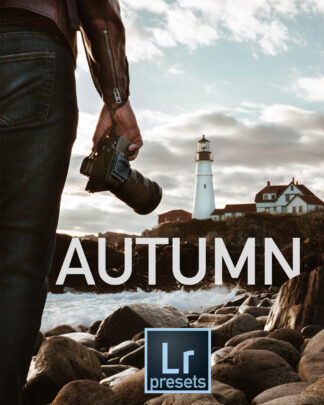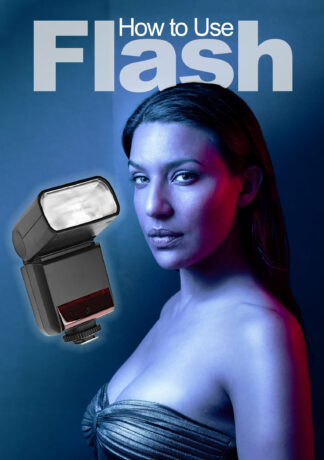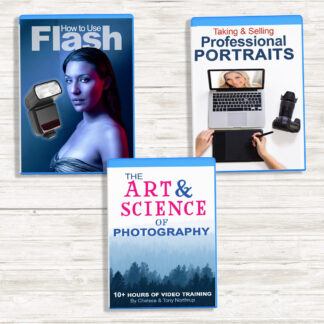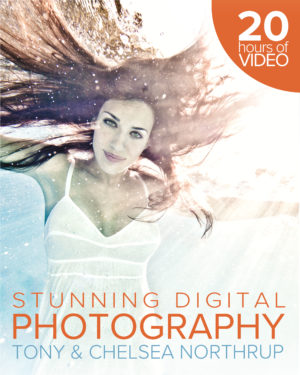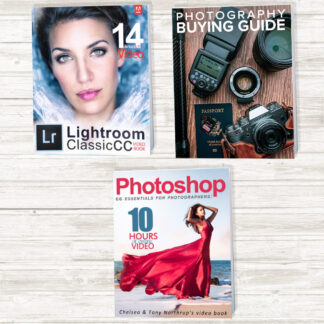[wprs-datatable cpt=”page” title=”Nikon cameras” rank=”no” action=”no” parent=”181″] This section of the site provides an overview of Nikon DSLRs, follow by recommendations for Nikon and third-party flashes and portrait equipment. Nikon has the strongest lineup of camera bodies in the world, and one of the best lens and flash lineups. I routinely recommend Nikon equipment for everyone from beginners on a sub-$500 budget to professional landscape photographers with over $10,000 to spend. Elsewhere in this book, I’ve done my best to help with the difficult decision every DSLR buyer faces: Canon or Nikon. While I have found a handful of distinct benefits of the Canon infrastructure, in most ways, Nikon meets or exceeds the standard set by the #1 camera manufacturer. You almost can’t go wrong by buying a Nikon. If you’re considering buying your first Nikon camera, there are a couple of scenarios where you might want to consider a different manufacturer:
- Video. If great video is more important to you than great still photos, you should consider Panasonic instead. Specifically, examine the GH2, GH3, and GH4 cameras (whichever new or used model fits your budget). They offer more video features, such as focus peaking and smarter focusing during recording. The newest cameras also offer 4k recording, which Nikon does not currently offer. Panasonic cameras are simply smaller, less expensive, and more capable than Nikon for most video work.
- Wildlife. If your budget is under $5,000, I would steer you to Canon instead. Lower-end Canon cameras tend to focus faster and have larger buffers, which are important factors for wildlife. Also, Nikon has no direct equivalent of the amazing Canon 400mm f/5.6 prime. Specifically, I recommend buying a used Canon 7D and a used 400mm f/5.6, for $1,500-$2,000 total. Of course, many amazing wildlife photographers use Nikon gear, but for most, Canon currently offers better bang-for-the-buck.
- Portraiture. I suggest casual portrait photographers buy a used Canon T3 and 50mm f/1.8 for about $400 total; that setup provides autofocus and great background blur at a price point Nikon can’t currently match. For more serious portrait and wedding photographers with budgets over $5,000, the Canon 70-200 f/2.8 simply can’t be matched because the Nikon equivalent of that lens has serious focus breathing problems that impact close-range portraiture. Intermediate portrait photographers with budgets from $1,000 to $5,000 could go with Canon or Nikon and see very similar results.
Nikon DSLR Buying Guide
This table shows the Nikon DSLRs currently available. In this table, FPS is Frames Per Second, the number of shots you can take in one second. IQ stands for Image Quality, and more stars is better. MP stands for Megapixels, which hardly makes a difference in the Canon lineup, because they’re all pretty similar. Motor refers to whether the body has a built-in focusing motor, allowing it to work with older lenses that lack a built-in focusing motor.
| Model | Price (new) | Price (used) | Arctic. Display | Wi-Fi | GPS | Full-frame | MP | FPS | Motor |
| D3100 | $350 | $200 | 14 | 3 | No | ||||
| D3200 | $380 | $350 | 24 | 4 | No | ||||
| D3300 | $600 (kit) | $500 | 24 | 5 | No | ||||
| D5100 | $470 | $300 | * | 16 | 4 | No | |||
| D5200 | $620 | $550 | * | 24 | 5 | No | |||
| D5300 | $650 | $620 | * | * | * | 24 | 5 | No | |
| D5500 | $750 | $600 | * | * | 24 | 5 | No | ||
| D90 | $614 | $300 | 12 | 4.5 | Yes | ||||
| D7000 | $900 | $600 | 16 | 6 | Yes | ||||
| D7100 | $1,150 | $900 | 24 | 6 | Yes | ||||
| D7200 | $1,500 | $1,200 | 24 | 6 | Yes | ||||
| D300S | $1,450 | $700 | 12 | 7 | Yes | ||||
| D600 | $1,250 | * | 24 | 5.5 | Yes | ||||
| D610 | $1,700 | $1,500 | * | 24 | 6 | Yes | |||
| D750 | $2,300 | Tilt | * | * | 24 | 6.5 | Yes | ||
| D800 | $2,800 | $2,200 | * | 36 | 4-6 | Yes | |||
| D810 | $3,300 | * | 36 | 5-7 | Yes | ||||
| Df | $2750 | $2,100 | * | 16 | 5.5 | Yes | |||
| D3X | $2,800 | * | 24 | 5 | Yes | ||||
| D4 | $3,600 | * | 16 | 10 | Yes | ||||
| D4S | $6,500 | $5,500 | * | 16 | 11 | Yes |
If you’re investing in your first Nikon camera, I suggest taking your total budget, dividing it by two, and picking the Nikon camera that you can afford. Then, set aside the rest of your budget for lenses, flashes, a memory card, and a tripod. Most photographers should choose one of the less expensive Nikon DX APS-C cameras (such as the D3x00, D5x00, D7x00). If you must make massive prints, or you need a full-frame FX lens for your style of photography, upgrade to one of the FX bodies (D6x0, D7x0, D8x0, or Df). In order from least to most expensive:
- D3100/D3200/D3300. They take fantastic pictures, and many photographers will be best served by choosing one of these entry-level bodies and saving more budget for lenses, flashes, and travel.
- D5100/D5200/D5300/D5500. They take the same pictures as the D3x00 series cameras, but offer better usability: bracketing, an articulating screen, and a more powerful focusing system make the cameras easier and more fun.
- D7000/D7100/D7200. They take slightly sharper pictures than the other cameras, they’re more durable, and the focusing is faster. However, they give up the articulating screen of the D5x00 and they’re heavier, making them less useful as all-around cameras. They’re the best choice for most wildlife and sports photographers in the Nikon world, however.
- D600/D610. The entry-level full-frame D6x0 series offers far better image quality than any of the previous cameras; noise is significantly reduced and pictures with full-frame lenses are much sharper. However, the focusing system isn’t as solid as the D7x00 or D750.
- D750. The D750 offers similar image quality to the D610, but adds a faster focusing system and an articulating screen. The D750 is the only full-frame camera with an articulating screen, and that really improves its usability.
- D800/D800E/D810. Perhaps the best full-frame studio and landscape cameras in the world, the D8x0 series captures clean, high-resolution images. You don’t necessarily need more expensive glass to capture more detail with these cameras.
- Df. Nikon’s retro camera has a low-resolution sensor but a stylish design. Oddly, it doesn’t record video.
- D3X/D4/D4S. If you need one of Nikon’s top-end professional bodies, you probably already know it. These cameras actually take less sharp pictures than the D810, but they’re extremely durable and fast.
The single-digit Nikons (currently the D3X and D4) are intended for professionals who really abuse their camera bodies and don’t mind carrying around the extra weight. With those cameras, you’re paying thousands of dollars for durability, weather sealing, and longevity that very few people will need. Therefore, I almost never recommend them to people who ask which camera to buy. They’re wonderful cameras, but if you need them, you probably already know, and wouldn’t be seeking advice from me. For that reason, the D810 is the highest-end camera that I recommend for amateurs and most pros. If you have an unlimited budget, get the D810 and several lenses. Otherwise, get the kit highlighted in the table that best suits your budget. Within the professional bodies, the D3X and D4/D4S are very similar in price. The D3X is more of a general purpose professional camera body, while the D4 is specialized for low light, sports, and photojournalism. Here’s a list of our reviews for all current Nikon cameras: [html_sitemap sort_order=”desc” child_of=CURRENT] If you’re currently debating Canon vs Nikon, this video might be helpful: https://www.youtube.com/watch?v=Jva08HY6uLE

